So you want to know more about mythological creaturs huh?
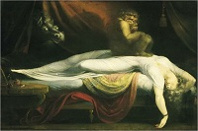 BAKHTAK
BAKHTAK
Suffer from excruciating nightmares? Ever wake up with a weight on your chest, unable to move or breathe? That may be the work of the Bakhtak, a creepy being of
Persian folklore that sits on your chest while you’re sleeping. No one is quite sure why the Bakhtak takes such glee in filling you with bad dreams or causing near-
suffocation and sleep paralysis, but we do know the Bakhtak gets around. The Bakhtak of Iranian fame is often depicted as a little goblin-like creature, but the same
concept takes on the guise of an Old Hag in English folklore and is similar to the Mara of Scandinavian origin.
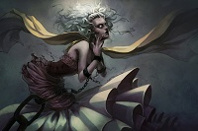 Banshee
Banshee
The Banshee is a female spirit in Irish mythology , usually seen as an omen of death and a messenger from the Otherworld. The story of the bean-sidhe began as a
fairy woman keening at the death of important personages. In later stories, the appearance of the banshee could foretell the death. According to the legend, the
banshee can appear in a variety of guises. Most often she appears as an ugly, frightening hag, but can also appear as a stunningly beautiful woman of any age that
suits her and is seen washing the blood stained clothes or armour of those who are about to die. Although not always seen, her mourning call is heard, usually at
night when someone is about to die and usually around woods.
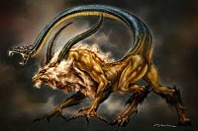 Chimera
Chimera
The Chimera according to Greek mythology, a monstrous fire-breathing female creature of Lycia in Asia Minor, composed of the parts of three animals: a lion, a
serpent and a goat. Usually depicted as a lion, with the head of a goat arising from its back, and a tail that ended in a snake’s head, the Chimera was one of the
offspring of Typhon and Echidna and a sibling of such monsters as Cerberus and the Lernaean Hydra.
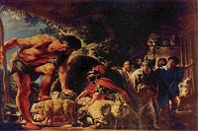 Cyclops
Cyclops
In Greek and Roman mythology , a cyclops is a member of a primordial race of giants, each with a single eye in the middle of its forehead. It is a great possibility
that people have been mistaken a congenital abnormality called Cyclopia in which the human baby is malformed having only one central eye.
 Dragon
Dragon
A dragon is a legendary creature, typically with serpentine or reptilian traits, that features in the myths of many cultures. There are two distinct cultural traditions of
dragons: the European dragon, derived from European folk traditions and ultimately related to Greek and Middle Eastern mythologies, and the Chinese dragon,
with counterparts in Japan (namely the Japanese dragon), Korea and other East Asian countries.[1]
The two traditions may have evolved separately, but have influenced each other to a certain extent, particularly with the cross-cultural contact of recent centuries.
The English word “dragon” derives from Greek δράκων (drákōn), “dragon, serpent of huge size, water-snake”.[2]
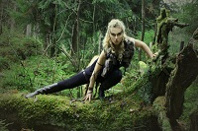 Elf
Elf
An elf is a being of Germanic mythology . The elves were originally thought of as a race of divine or semi-divine beings endowed with magical powers, which they
use both for the benefit and the injury of mankind. In pre-Christian mythology, they appear to have been divided into light elves and dark elves, The earliest
preserved description of elves comes from Norse mythology that holds that the men could be elevated to the rank of elves after death, Crossbreeding was
possible between elves and humans in the Old Norse belief.Words for the nymphs of the Greek were translated to be same as “elves” or its variants by Anglo-
Saxon scholars.
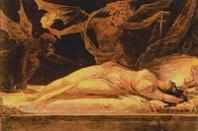
Incubus
An incubus is a demon in male form who, according to a number of mythological and legendary traditions, lies upon sleepers, especially women, in order to have
sexual intercourse with them. Its female counterpart is the succubus. An incubus may pursue sexual relations with a woman in order to father a child, as in the
legend of Merlin. Religious tradition holds that repeated intercourse with an incubus or succubus may result in the deterioration of health, or even death.
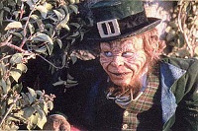 Leperchaun
Leperchaun
Leprechauns have been linked to the Tuatha Dé Danann of Irish mythology who are thought to derive from the pre-Christian deities of Ireland. When the surviving
stories were written, Ireland had been Christian for centuries, and the Tuatha Dé were represented as mortal kings, queens and heroes of the distant past; however
there are many clues to their former divine status. Popular depiction shows leperchauns as being no taller than a small child. The leprechaun is said to be a solitary
creature, whose principal occupation is making and mending shoes, and who enjoys practical jokes. According to William Butler Yeats, the great wealth of these
fairies comes from the “treasure-crocks, buried of old in war-time”, which they have uncovered and appropriated.According to McAnally the leprechaun is the son
of an “evil spirit” and a “degenerate fairy” and is “not wholly good nor wholly evil”.
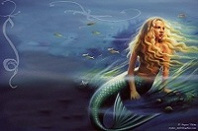 Mermaid
Mermaid
A mermaid is a mythological aquatic creature with a female human head and torso and the tail of a fish..The mermaids have been discussed since at least 5000 BC.
Her origins are believed to be from the Great Queen Atargatis, who loved a mortal shepherd and unintentionally killed him. Ashamed, she jumped into a lake to take
the form of a fish, but the waters would not conceal her divine beauty. Thereafter, she took the form of a mermaid—human above the waist, fish below. Mermaids
were however noted in British folklore as unlucky omens – both foretelling disaster and provoking it. There is a high possibility that people had been confusing them
with Sirenias (aquatic animals) or people suffering from a congenital disease Sirenomelia (aka mermaid syndrome in which a child is born with his or her legs fused
together).
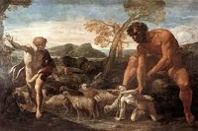 Nephilim
Nephilim
Nephilim are beings, who appear in the Hebrew Bible; specifically mentioned in the Book of Genesis and the Book of Numbers; they are also mentioned in other
Biblical texts and in some non-canonical Jewish writings. They were called fallen ones because men’s hearts would fail at the sight of them. Some suggest that they
were giants and when they fell, the ground shook, causing others to fall too. They might not be historical figures but ancient imagery with questionable meaning.
Some view of them as the hybrid offspring of fallen angels and human women. In Hebrew Bible there is also mention of Rephaites alongside Nephilims, who were
an ancient race of giants in Iron Age and were thought to be dead that lurked upon earth.

Ogre
Ogre possibly derived from Oegrus from Greek mythology who was the son of Greek blood shedder god. The word ogre is of French origin . Keeping the Greek
myth, Oegrus might have cursed some people to ogres where an ogre is described large, cruel, monstrous and hideous humanoid monster. Also featured in
mythology, folklore and fiction. Ogres are often depicted in fairy tales and folklore as feeding on human beings, and have appeared in many classic works of
literature. In art, ogres are often depicted with a large head, abundant hair and beard, a voracious appetite, and a strong body. The term is often applied in a
metaphorical sense to disgusting persons who exploit, brutalize or devour their victims. The French tale tells of them as habitants of kingdom of Logres [England].
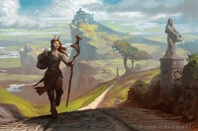 Satyr
Satyr
Satyrs were originally seen as companions of the goat god Pan in ancient Greek civilisation . The first drawings of satyrs were of normal men, though often with an
erect phallus. It was later merged with the Roman faun which is when they began to be depicted as half men half goats (the upper body being that of the man, and
the lower half being that of a goat). Satyrs are described as roguish but faint-hearted folk — subversive and dangerous, yet shy and cowardly. Many early accounts
which apparently refer to this animal describe the males as being sexually aggressive towards human women and towards females of its own species. In old age
they are often seen with horns on their head, while young satyrs are seen with nubs instead.
 Unicorn
Unicorn
The unicorn is a legendary animal that has been described since antiquity as a beast with a large, pointed, spiraling horn projecting from its forehead. The unicorn
was depicted in ancient seals of the Indus Valley Civilization and was mentioned by the ancient Greeks in accounts of natural history by various writers, including
Ctesias, Strabo, Pliny the Younger, and Aelian.[1] The Bible also describes an animal, the re’em, which some translations have rendered with the word unicorn.[1]
In European folklore, the unicorn is often depicted as a white horselike or goatlike animal with a long horn and cloven hooves (sometimes a goat’s beard). In the
Middle Ages and Renaissance, it was commonly described as an extremely wild woodland creature, a symbol of purity and grace, which could only be captured by
a virgin. In the encyclopedias its horn was said to have the power to render poisoned water potable and to heal sickness. In medieval and Renaissance times, the
horn of the narwhal was sometimes sold as unicorn horn.
 Vampires
Vampires
Vampires are mythological beings who subsist by feeding on the life essence (generally in the form of blood) of living creatures, regardless of whether they are
undead or a living person.Although vampiric entities have been recorded in many cultures, the belief in vampires and bloodsucking demons is as old as man
himself, and may go back to prehistoric times. Vampires were generally referred to as cold beings who could be destroyed by daylight. Holes appearing in the
earth over a grave were taken as a sign of vampirism. There is no scientific evidence of vampirism except the Vampire Bat.
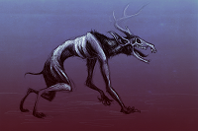 Wendigo
Wendigo
The Wendigo is a creature appearing in the mythology of the Algonquian people. Descriptions of the Wendigo vary across culture, but they are generally described
as a large alien-like canine beast. They are malevolent and cannibalistic creatures. Wendigos are strongly associated with the winter, the north, and coldness.
Human beings will transform into Wendigos if they perform cannibalism. The person will become possessed by the demonic spirit of the beast, usually in a dream.
Once transformed, the individual will become violent and obsessed with eating human flesh. These monsters are the embodiments of gluttony, greed, and excess.
They are never satisfied with killing and consuming one person. Wendigos are constantly searching for new victims. They have been classified as giants and upon
transformation the human will grow considerably in size. They populate rural and highly forested, mountainous regions. Recently the Wendigo has become a horror
entity, much like the vampire, werewolf, or zombie.
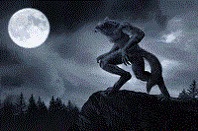
Werewolf
Werewolf is a mythological human with the ability to shapeshift into a wolf or an anthropomorphic wolf-like creature, either purposely, by being bitten or scratched
by another werewolf, or after being placed under a curse. This transformation is often associated with the appearance of the full moon. Werewolves are often
attributed super-human strength and senses, far beyond those of both wolves or men.

Yeti
Yeti or abominable snowman mythological humanoid creature said to inhabit the Himalayan region of Pakistan and Nepal. The scientific community largely regards
the Yeti as a legend, yet it remains one of the most famous creatures of cryptozoology parallel to Bigfoot of North America. It is tall, bipedal creature covered with
long white hair and wore no clothes. He had an interesting feature of changing his hair color in sunlight to fox red.
